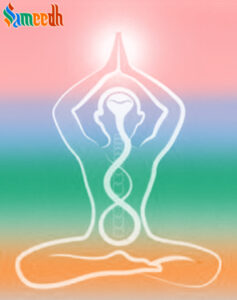The Goraksha Samhita is a sacred text within the Nath tradition of Hinduism, attributed to the sage Gorakshanath (also known as Gorakhnath). Gorakshanath is considered one of the most influential figures in the Nath tradition, which emphasizes the practice of Hatha Yoga, tantra, and spiritual asceticism.

The Goraksha Samhita is a sacred text within the Nath tradition of Hinduism, attributed to the sage Gorakshanath (also known as Gorakhnath). The Goraksha Samhita is a comprehensive text that covers various aspects of Hatha Yoga, spiritual practices, and esoteric knowledge. It consists of teachings, instructions, and philosophical insights aimed at guiding practitioners on the path of spiritual awakening and self-realization. While the complete contents of the Goraksha Samhita may vary across different versions and translations, some of its key teachings include:
- Asanas (Yogic Postures): The Goraksha Samhita provides instructions on practicing different yogic postures or asanas. These postures are aimed at promoting physical health, flexibility, and vitality, as well as preparing the body for deeper states of meditation and spiritual practice.
- Pranayam (Breath Control): The text offers guidance on various breathing techniques or pranayama practices. Pranayam techniques are used to regulate and control the breath, which is believed to influence the flow of vital energy (prana) within the body. Practicing pranayama can help calm the mind, increase vitality, and purify the energy channels (nadis).
- Mudras (Gestures): Mudras are symbolic hand gestures or seals used in yoga and meditation to channel energy and enhance concentration. The Goraksha Samhita may contain descriptions of various mudras and their applications in facilitating the flow of prana, balancing the subtle energy centers (chakras), and deepening meditative states.
- Bandhas (Energy Locks): The text may include teachings on bandhas, which are subtle energy locks or seals performed during yoga practice. Bandhas involve contracting and releasing specific muscles to redirect and regulate the flow of prana within the body. Examples of bandhas include Mula Bandha (Root Lock), Uddiyana Bandha (Abdominal Lock), and Jalandhara Bandha (Throat Lock).
- Kriyas (Cleansing Techniques): The Goraksha Samhita may contain descriptions of kriya practices, which are purification techniques aimed at cleansing the physical body and subtle energy system. Kriyas may involve practices such as neti (nasal cleansing), dhauti (internal cleansing), and basti (colon cleansing), among others.
- Yoga Philosophy and Tantra: Along with practical instructions, the Goraksha Samhita may also contain teachings on yoga philosophy, tantra, and spiritual wisdom. These teachings may explore concepts such as the nature of the self (atman), the path of liberation (moksh), and the union of individual consciousness with the universal consciousness (samadhi).
Overall, the Goraksha Samhita serves as a valuable guide to the practice of Hatha Yoga and spiritual asceticism within the Nath tradition. It offers practitioners profound insights and techniques for integrating body, breath, and mind in their pursuit of self-realization and spiritual awakening.